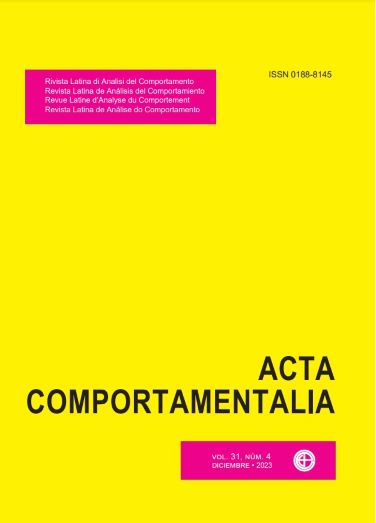Ensino baseado em equivalência e dicas e aprendizagem de operações aditivas
Contenido principal del artículo
Resumen
Foi investigado o efeito de um programa de ensino baseado em equivalência de estímulos e dicas para a emissão de comportamentos precorrentes na resolução de operações aditivas, com numerais de 0-14. Quatro crianças (4 a 5 anos), sendo três com desenvolvimento neurotípico e uma com diagnóstico de autismo, foram expostas a um programa de ensino computadorizado com tarefas de pareamento ao modelo. Metade dos participantes foi exposta ao programa com dicas com figuras e metade com dicas com vídeos. Após a formação de classes com os numerais, operadores e sentenças, foi realizado o treino das operações que envolvia o pareamento entre sentença com numerais e numeral, com a inclusão de botão de consulta a dica. Independente da modalidade da dica, todos os participantes aprenderam a selecionar dentre os numerais (comparações) aquele que correspondia ao resultado da operação (modelo) de soma ou subtração. As relações com os escores mais baixos foram entre numeral e sentença com numerais e sentença falada e numeral. Entretanto, a generalidade dos resultados deve ser investigada com dicas com características mais distintas, outros comportamentos precorrentes, e com um delineamento que permita medidas repetidas da linha de base, e a identificação de possíveis efeitos de variáveis intervenientes.
Detalles del artículo
Citas en Dimensions Service

<a rel="license" href="http://creativecommons.org/licenses/by-nc-sa/4.0/"><img alt="Licencia de Creative Commons" style="border-width:0" src="https://i.creativecommons.org/l/by-nc-sa/4.0/88x31.png" /></a><br />Este obra está bajo una <a rel="license" href="http://creativecommons.org/licenses/by-nc-sa/4.0/">licencia de Creative Commons Reconocimiento-NoComercial-CompartirIgual 4.0 Internacional</a>.
